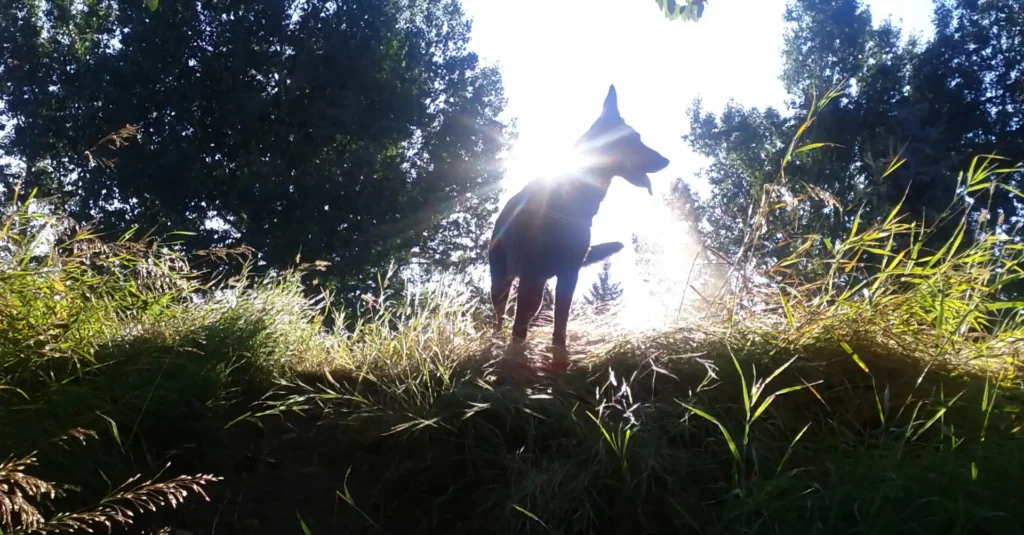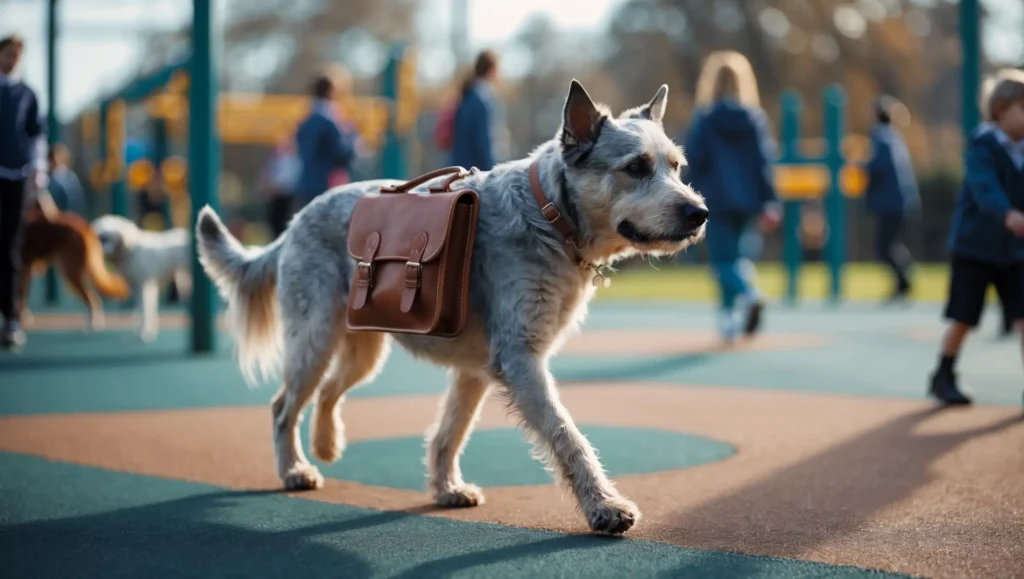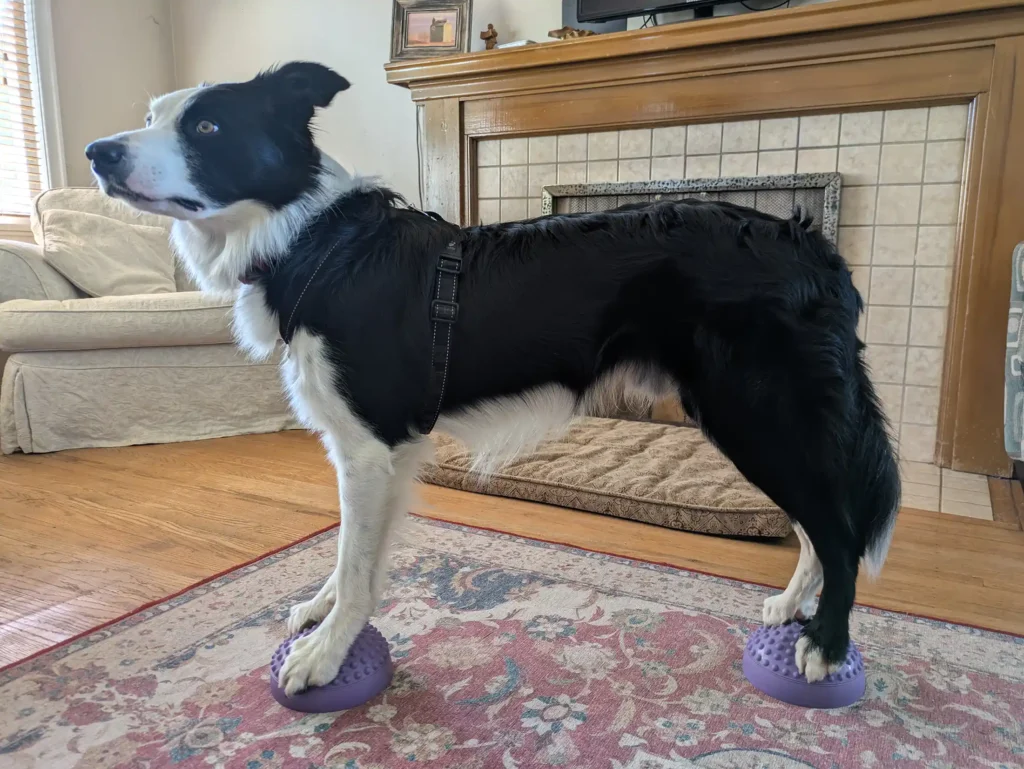With all the dog-related products on the market today, trying to decide what to get for training can be a bit overwhelming. For my clients I have six basic items I recommend. Buy good quality and your gear will last a long time. You will be using this equipment daily and it should make your training efficient – and effective!
1. The Well-Fitted Flat Collar: Your Dog’s ID Essential
The most basic piece of equipment of course is a well fitted flat collar for your dog or puppy. Look for one that is durable and well made with a solid clip, making the collar easy to put on and take off. There are a number of great collars out there on the market. Your dog’s collar is for an ID tag/license and, if not using a harness, walking. Even when using a harness, your dog should wear a collar for safety. Making sure your dog is easily identified should they get out of the house/car is important. In my travels I have come across a good handful of dogs with no owner in sight loose on the road – the dogs wearing a collar made them easier to catch and identification easy. My dogs wear their collars 24-7. With a puppy, I remove the collar only when being crated.
2. The Comfortable Harness: Prioritize Fit and Movement
I’ve been training a long time – a very long time – and “back in the day” harnesses were not a thing. Today they are standard equipment and something I recommend to most of my clients. That said, choose your harness wisely: step back and take a hard look at the harness your dog is wearing and ask if it looks comfortable. You want to avoid restrictive “no-pull” harnesses as they can cause nerve damage. Look for a harness that is very adjustable for a good fit, keeping the shoulders free for natural movement. Your harness should have both a front and a back clip. My #1 favourite is the Blue 9 Balance Harness . A more thorough discussion on what to look for in a harness can be found in one of my recent blog posts. Harness Up.
3. The Reliable Leash: From Daily Walks to Rainy Days
A basic, straight six foot leash (no bungee, extra handles or other doodads) for daily walking is a must. You could even go to 8 feet for a little extra sniffing – this is the length I walk my dogs on. In this category there are so many options! For the big pullers (until you have your dog trained) I love the Gripper leash. With rainy Vancouver days, WAU Dog makes a great selection of leashes – easy to wipe dry and soft in your hands. This leash will be your mainstay for many of your walks! Make sure to match the weight of your leash to the weight of your dog. You wouldn’t use a Rottweiler strength leash on a Chihuahua – or visa versa!
4. The Biothane Long Line: Building Recall Safely
For recall training and extra freedom in open spaces for a dog not yet trustworthy off leash, a biothane long line is essential. I recommend 20 feet as this length is fairly manageable while still allowing some freedom for your dog or puppy. Biothane is a great material for long lines as it is easy to clean and doesn’t tangle. A long line ensures your recall training goes successfully and keeps your dog safe. Long lines can be dangerous in busy spaces around other dogs and people, so be thoughtful when using one. But they are a fantastic training aid, especially for puppies in their recall training journey!
5. The Tug Toy: Boost Engagement Beyond Treats
If you train with me you know how much I advocate for playing tug. The tug toy has a powerful engagement quality to it that food does not. Go to a dog park and look at the dogs that stay with their humans, the dogs that are engaged and come back naturally out of choice. It is most always because that person has a toy that they are using to play with their dog – either fetch or tug. Spend a few dollars and get your dog a good quality tug toy. A well made tug will last a very long time, as long as it isn’t left out (no, they do not double as a chew toy). Look for a long handle with a bungee component, and some type of fur, faux or otherwise. Toys and Tugs makes a great selection of tugs and has sponsored some of our national agility events. A good tug is most always hand made and should be sourced outside of regular retail stores. And then learn how to play tug with your dog! More details on this can be found in one of my recent blog posts, Let’s Play Tug.
6. The Treat Pouch: Quick Access for Efficient Training
The last item I recommend – and one of the most important – is a well made treat pouch. As reinforcement based trainers, we use food a lot in developing behaviours and building good life skills. Easy and quick access to treats makes for efficient training. My preference is an ample pouch with metal hinges on the sides that is attached to a belt. Dog Gone Good makes one of the best – it is the pouch I go back to time and again as it has all the features I want to see – extra compartments for a clicker, bags, house keys – without being bulky. For me, my treat pouch is as essential as my dog’s leash and I bring it on all of my walks so it is well used.
Wrapping It Up: Your Training Toolkit for Years of Fun
So there you have it! These six basic lifestyle and training tools – thoughtfully sourced – will assist in your daily exercise and training, and should serve years of good use. Beyond some good quality treats and a dog to train, you shouldn’t need much else.
All you need now is to go out and have fun!


